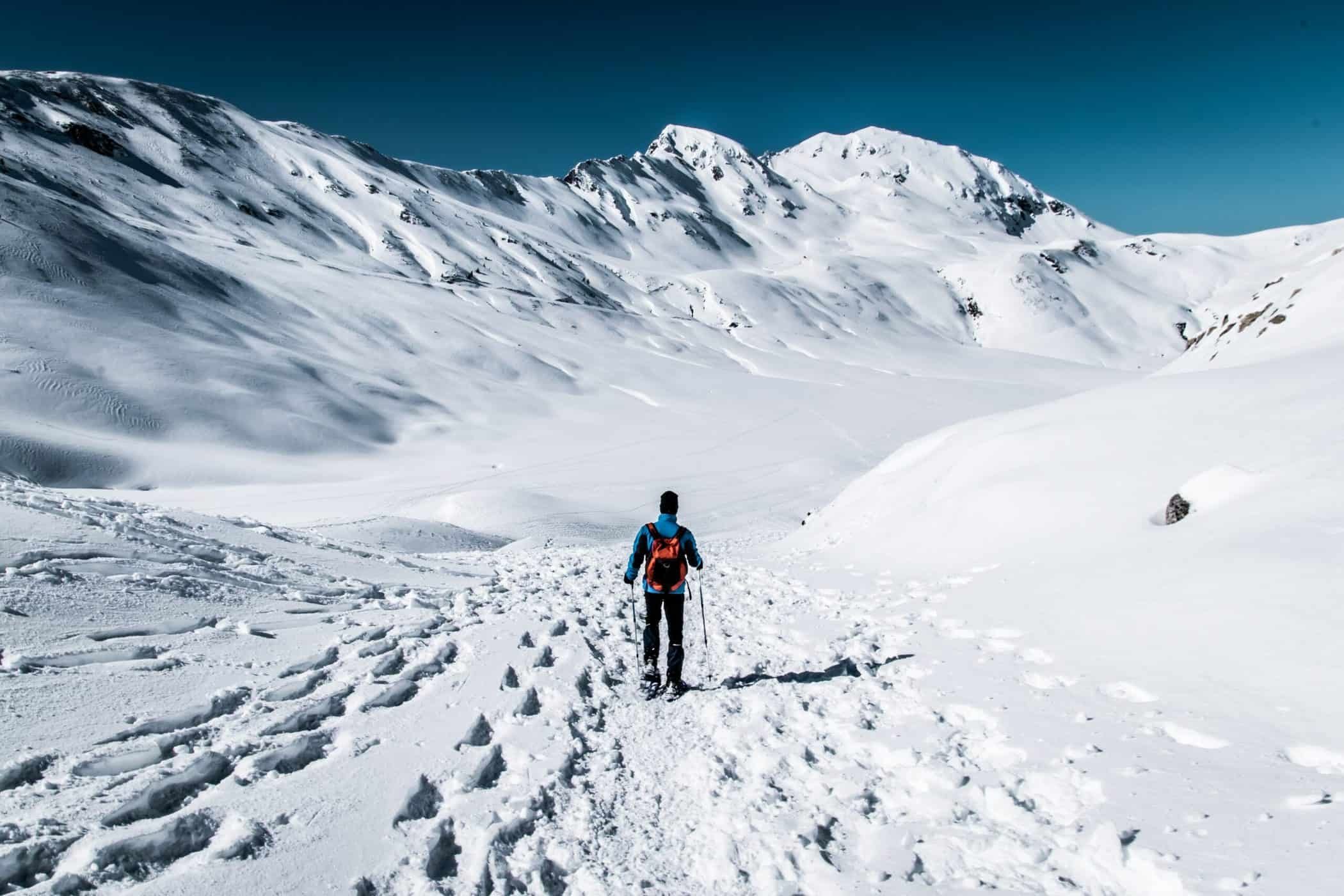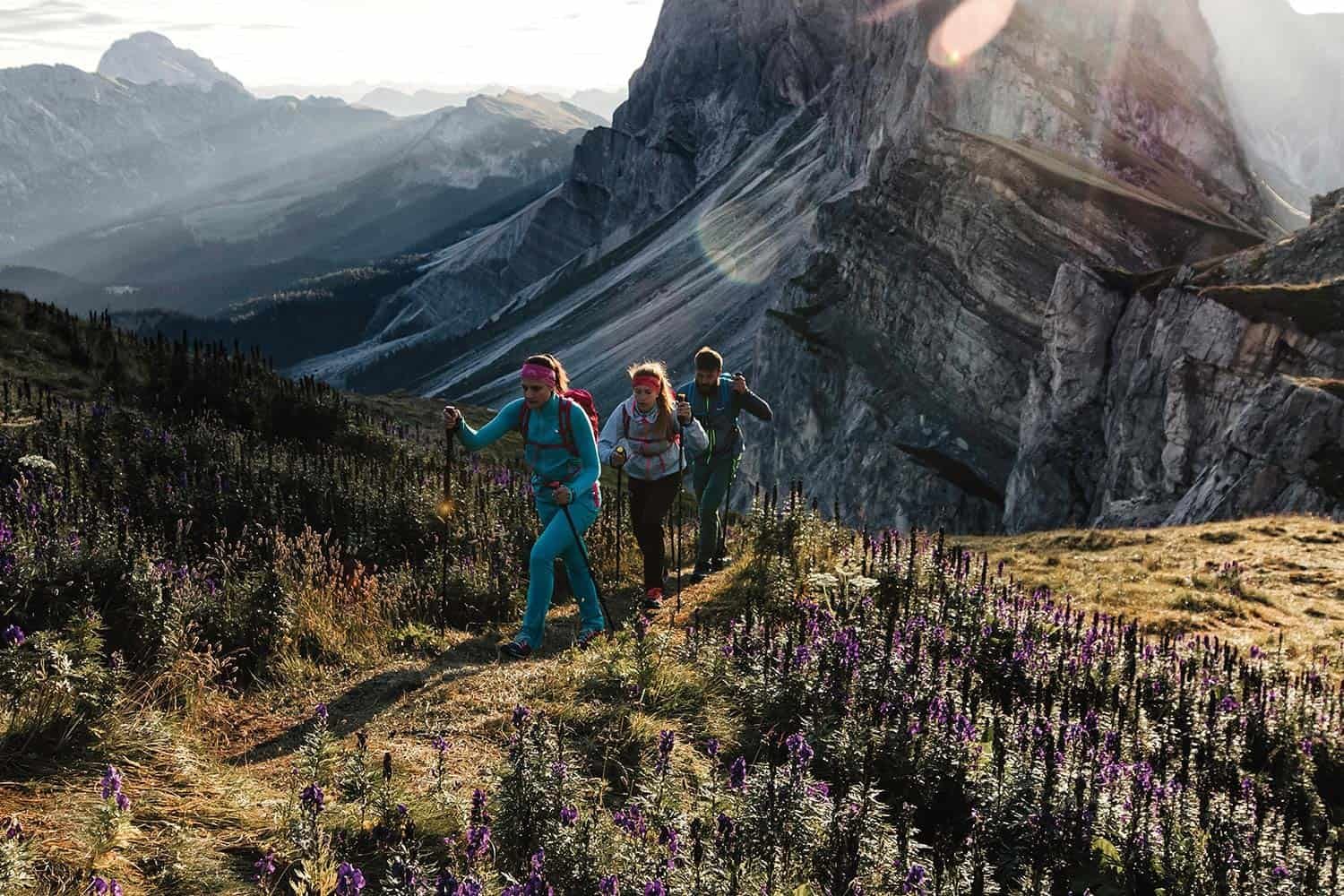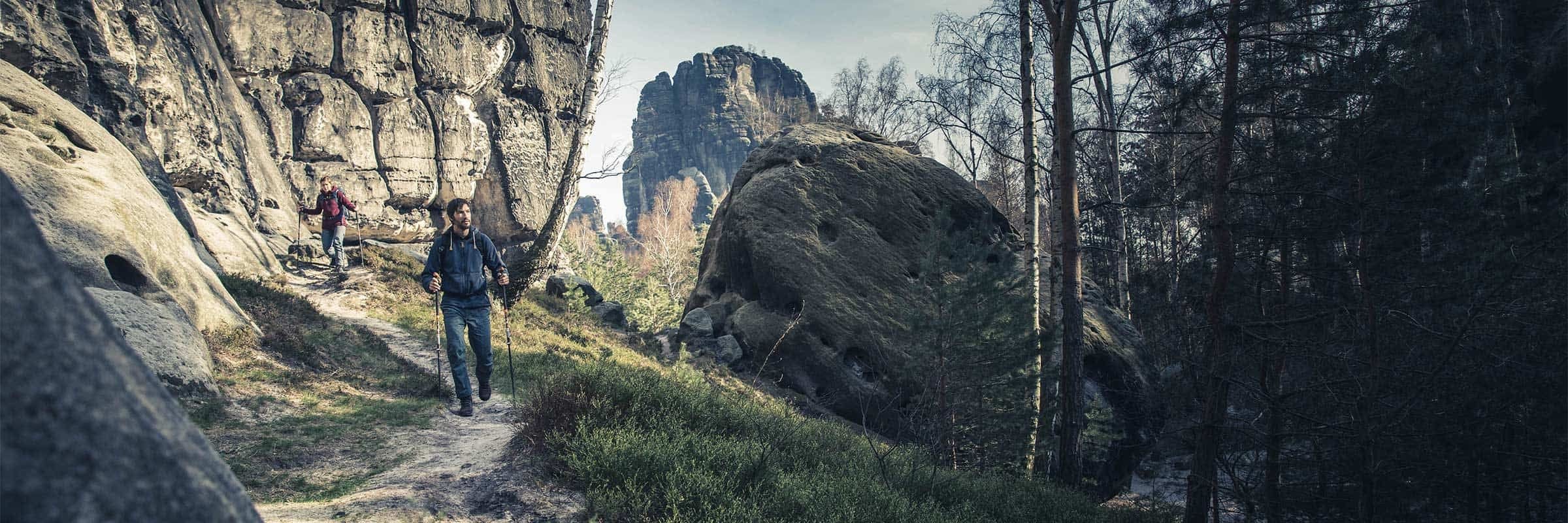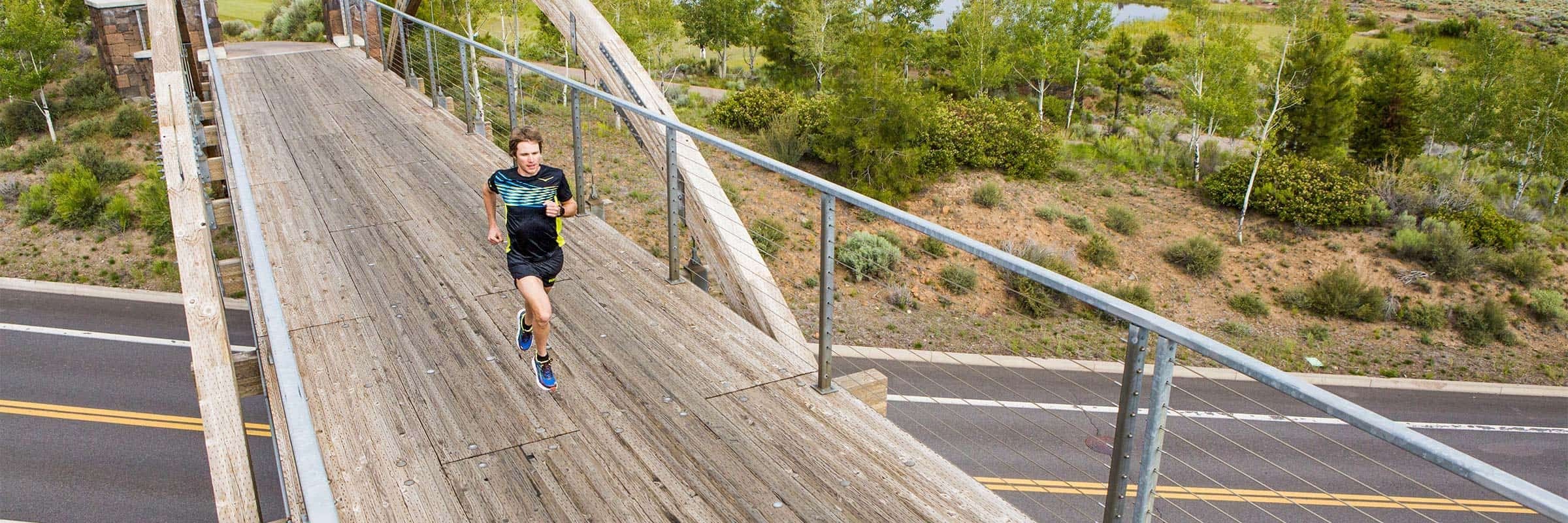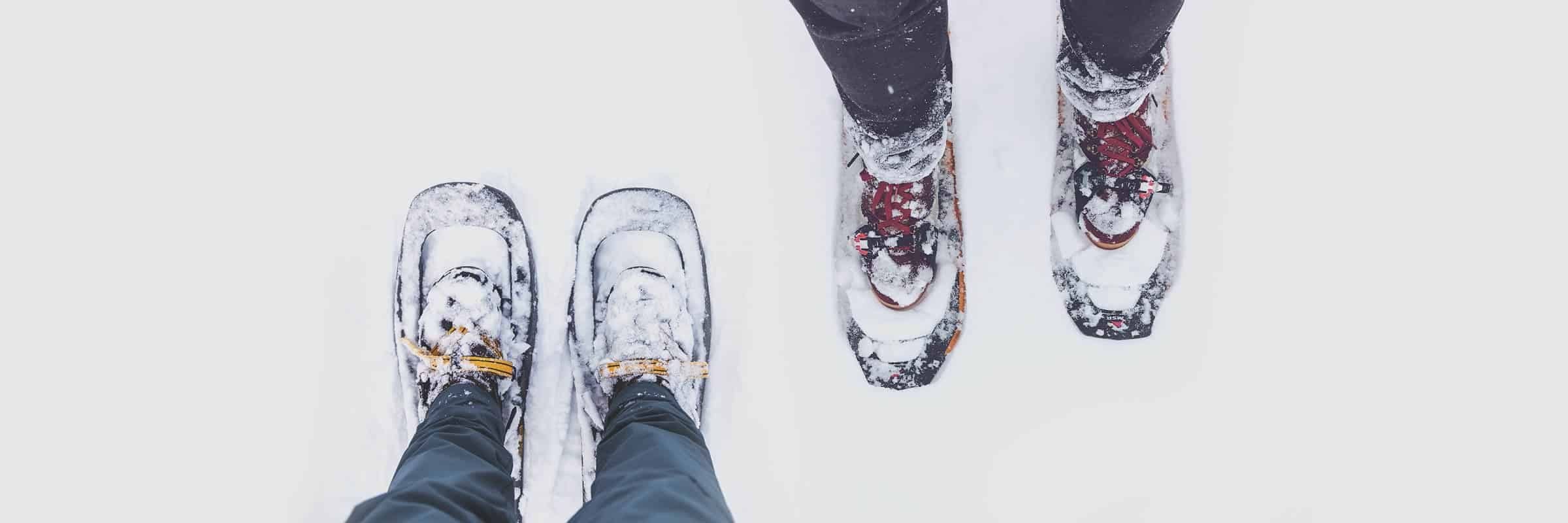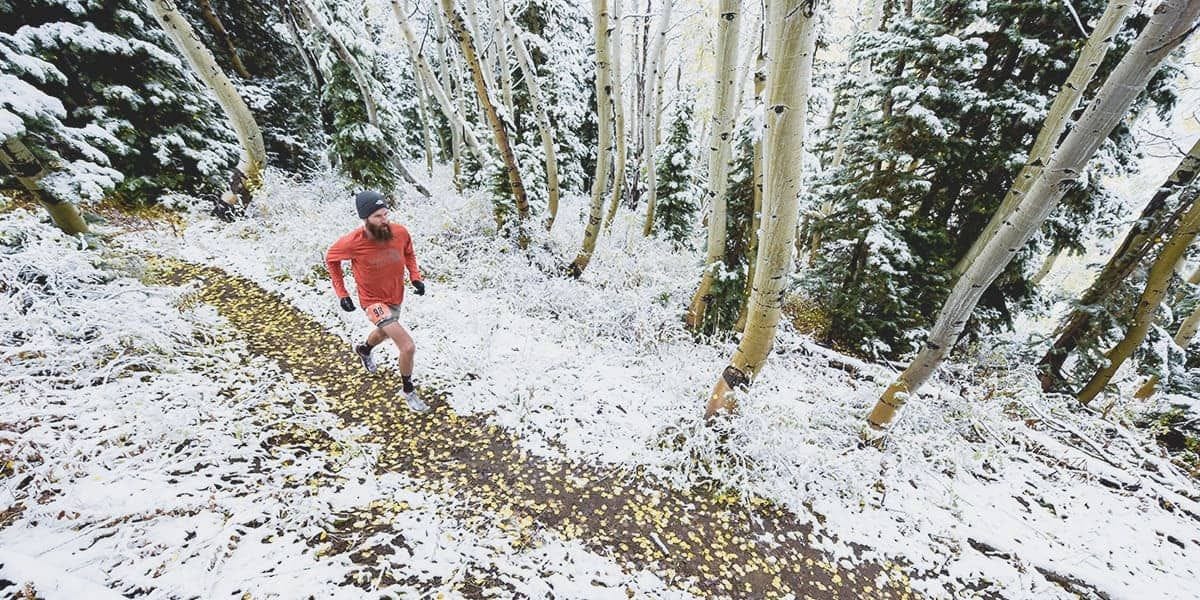Hiking in the winter is a beautiful and serene experience – the fresh snow, the blue skies, the snow-capped peaks in the distance. But hiking in winter also comes with its challenges: tricky terrain, cold and uncertain weather, and the potential for wet, freezing feet.
However, avoiding cold, uncomfortable feet during winter hikes is easy with the proper footwear. The best winter hiking boots, such as the Lowa Renegade GTX Mid Boots, are insulated, waterproof, lightweight, and have great grip. Below, we break down all of our recommended winter hiking shoes.
Best Overall Winter Hiking Boots
Lowa Renegade GTX Mid Boots
Every brand has a signature piece, and for Lowa, that’s the Renegade GTX Mid Boots. The modest insulation from the GORE-TEX liner and waterproof build make these boots ideal for snowshoeing in milder temperatures. The solid grip from the VIBRAM Evo outsole increases traction on icy, slippery surfaces.
The women’s version of the Renegade GTX Mid Boots comes in vibrant colours and shares the same reliable technology as the men’s. In addition, these boots are incredibly versatile, so you can use them to transition from winter to spring hiking easily. Overall, this boot is very comfortable and supportive, relative to how lightweight it is.
Price: 0.00$
Pros
- Waterproof
- Comfortable
- Stable
Cons
- Moderately insulated
Brand Name | Product Type
- Waterproof<\/span><\/li>
- Comfortable<\/span><\/li>
- Stable<\/span><\/li><\/ul>","cons":"
- Moderately insulated <\/span><\/li><\/ul>","collection":null,"single_product_id":"","cta_1_url":{"url":"https:\/\/www.altitude-sports.com\/products\/lowa-womens-renegade-gtx-mid-llll-lwa-320945","is_external":"","nofollow":"","custom_attributes":""},"cta_2_url":{"url":"https:\/\/www.altitude-sports.com\/products\/lowa-mens-renegade-gtx-mid-wide-all-terrain-boots-llll-lwa-310968","is_external":"","nofollow":"","custom_attributes":""},"credit":null,"limit":null,"collection_link":null}
- Comfortable<\/span><\/li>
Second Overall
Keen Revel IV High Polar Insulated Hiking Boots
Our best runner-up winter hiking boots are the Keen Revel IV High Polar Insulated Hiking Boots. While hikers can use them on all-terrain, they work especially well for cold-weather hikes.
Featuring KEEN.WARM Recycled PET insulation, these mid boots are ideal for long days that get down to a bone-chilling -40°C/-40F. Meanwhile, the outer membrane is built with KEEN.DRY, which is both waterproof and breathable. Eco Anti-Odor naturally eliminates nasty smells from the footbed.
Price: 0.00$
Pros
- Well-insulated
- Durable
- Supportive
Cons
- May be too narrow if you have wide feet
Brand Name | Product Type
- Well-insulated <\/span><\/li>
- Durable<\/span><\/li>
- Supportive<\/span><\/li><\/ul>","cons":"
- May be too narrow if you have wide feet<\/span><\/li><\/ul>","collection":null,"single_product_id":"","cta_1_url":{"url":"https:\/\/www.altitude-sports.com\/products\/keen-revel-iv-high-polar-boots-womens-llll-ken-1023622","is_external":"","nofollow":"","custom_attributes":""},"cta_2_url":{"url":"https:\/\/www.altitude-sports.com\/products\/keen-revel-iv-high-polar-boots-mens-llll-ken-1023619","is_external":"","nofollow":"","custom_attributes":""},"credit":null,"limit":null,"collection_link":null}
- Durable<\/span><\/li>
Best Budget Winter Hiking Boots
Shelter ClimaSalomon Waterproof Hiking Shoes
If you’re testing out the best budget winter hiking boots and want to start at a lower price point, the Salomon Shelter ClimaSalomon Waterproof Hiking Shoes are a great choice. What sets these hiking shoes apart is the ClimaSalomon (CS) technology, which refers to the flexible, lightweight, and fully-waterproof bootie.
While the inner bootie keeps your feet dry and warm, the Contagrip W compound outsole gives you stability in uncertain winter conditions. The OrthoLite sock liner makes it easy for people to hike for longer in temperatures down to 5°C to -10°C.
For women, we recommend the Salomon Outpulse Mid GORE-TEX Hiking Shoes, which provide the same comfort, grip, price, and warmth as the men’s Shelter Shoes.
Price: 0.00$
Pros
- Casual
- Warm
- Affordable
Cons
- Modest ankle support
Brand Name | Product Type
- Casual <\/span><\/li>
- Warm<\/span><\/li>
- Affordable<\/span><\/li><\/ul>","cons":"
- Modest ankle support<\/span><\/li><\/ul>","collection":null,"single_product_id":"","cta_1_url":{"url":"https:\/\/www.altitude-sports.com\/products\/salomon-outpulse-gore-tex-hiking-shoes-womens-llll-sal-l41588300","is_external":"","nofollow":"","custom_attributes":""},"cta_2_url":{"url":"https:\/\/www.altitude-sports.com\/products\/salomon-shelter-climasalomon-waterproof-hiking-shoes-mens-llll-sal-l41110400","is_external":"","nofollow":"","custom_attributes":""},"credit":null,"limit":null,"collection_link":null}
- Warm<\/span><\/li>
Best Premium Winter Hiking Boots
Hanwag Alaska GTX Trekking Boots
If you’re ready to invest in durable, elegant winter hiking boots, we recommend the Hanwag Alaska GTX Trekking Boots. These beautiful boots are handcrafted with waxed Nubuck leather and GORE-TEX laminate lining.
The men’s version of the Alaska 100 GTX Boots has full-grain leather uppers and a GORE-TEX liner. The Alaska also features a higher rubber rand to protect your ankles from sharp objects when you’re hiking, hunting, or exploring the backcountry. Though they are an investment, the quality and design are top-notch.
Price: 0.00$
Pros
- Well-designed
- High quality
- Versatile
Cons
- Sizing tends to run narrow
Brand Name | Product Type
- Well-designed <\/span><\/li>
- High quality <\/span><\/li>
- Versatile <\/span><\/li><\/ul>","cons":"
- Sizing tends to run narrow<\/span><\/li><\/ul>","collection":null,"single_product_id":"","cta_1_url":{"url":"https:\/\/www.altitude-sports.com\/products\/hanwag-womens-alaska-gtx-trekking-boots-llll-hwg-13120#?style=Brown","is_external":"","nofollow":"","custom_attributes":""},"cta_2_url":{"url":"https:\/\/www.altitude-sports.com\/products\/hanwag-mens-alaska-gtx-trekking-boots-llll-hwg-2303","is_external":"","nofollow":"","custom_attributes":""},"credit":null,"limit":null,"collection_link":null}
- High quality <\/span><\/li>
Best Winter Hiking Boots for Warmth
Lowa Hunter GTX Evo Extreme Boots
The Lowa Hunter GTX Evo Extreme Boots are built for all-day hikes and mountain climbs in colder temperatures. The higher calf coverage and Primaloft 200 insulation mean these boots can support hikes in winter conditions down to -25°C. In addition, the Vibram Masai Tec sole and large studs help these boots handle challenging terrain and downhill or uphill traction.
For women, we recommend the Lowa Z-8S GTX C Hiking Boots, which have a similar build to the GTX Evo Extreme Boots. They’re also built for challenging terrain, providing excellent traction with the LOWA Tactical Z Trac outsole. Plus, the GORE-TEX liner and rugged suede leather upper make them comfortable and supportive.
Price: 0.00$
Pros
- Long-lasting
- Good grip
- Great stability
Cons
- Heavy
Brand Name | Product Type
- Long-lasting <\/span><\/li>
- Good grip<\/span><\/li>
- Great stability<\/span><\/li><\/ul>","cons":"
- Heavy<\/li><\/ul>","collection":null,"single_product_id":"","cta_1_url":{"url":"https:\/\/www.altitude-sports.com\/products\/lowa-z-8s-gtx-c-hiking-boots-womens-llll-lwa-320684#?style=Dark%20Brown","is_external":"","nofollow":"","custom_attributes":""},"cta_2_url":{"url":"https:\/\/www.altitude-sports.com\/products\/lowa-hunter-gtx-evo-extreme-boots-mens-llll-lwa-210894#?style=Antique%20Brown","is_external":"","nofollow":"","custom_attributes":""},"credit":null,"limit":null,"collection_link":null}
- Good grip<\/span><\/li>
What to Look for in Winter Hiking Boots
When you’re hiking over uncertain terrain in the winter, there are several key factors to consider. Below, we explain each component so you can select the right hiking boots.
Insulation
At a minimum, winter boots should be waterproof and insulated to keep your feet warm and comfortable. Knowing the amount of insulation can help you choose the right boots for your needs.
For example, some boots have 200 grams of Primaloft insulation, a common type of synthetic insulation, while others simply have a GORE-TEX liner. Temperature ratings are another way to see how relatively warm winter boots are, though the warmth will be subjective to each person.
Traction
Your hiking boots should provide a good grip when you’re walking across packed or loose snow. Try to find boots with deep lugs such as Vibram Grip or some other compound on the outsole.
You may also want to add traction aids to your insulated hiking boots such as the Kahtoola MICROspikes or Hillsound FreeSteps6 Crampon.
Durability
How durable hiking boots are will come down to the build and materials. Nubuck or full-grain leather, for instance, is very durable and resists water and abrasion. Synthetics like nylon, polyester, and “synthetic leather” may be less expensive but can start to wear down sooner.
Waterproof membranes and liners such as GORE-TEX also help hiking boots last longer and prevent moisture from entering the shoe.
Versatility
Though hiking boots for cold winter weather aren’t shoes for everyday wear, some models are more versatile than others. For example, mid hiking shoes with modest insulation can also be used for commuting and short local walks.
A low bootie could be used for working from home and even city outings. Finding a hiking shoe that you can wear in different contexts helps you get more wear out of it.
FAQ
Q: Are hiking boots and snow boots the same?
A: Hiking boots and snow boots are not the same but have some similarities. Hiking boots tend to be lighter, more breathable, and more comfortable than snow boots. Snow boots can provide better traction in the snow and usually come up higher around the calf.
Q: How tall should winter hiking boots be?
A: Winter hiking boots can be varying heights depending on your needs. For heavy snow, calf-height hiking boots are best, while mid boots are best for shorter hikes in milder weather.
Q: Can hiking shoes be used in the snow?
A: Hiking boots are safe to use in the snow as long as they are insulated and waterproof. If your hiking boots absorb water on regular hikes, using them in the snow could lead to a dangerous situation such as frostbite.
Final Tips, Winter Warrior
Whether you want solid winter boots for doing cold-weather commutes or tackling snowy trails, any reason is perfect for investing in boots that keep your feet warm and dry. When selecting winter boots, pay attention to the traction, materials, insulation, and waterproofing to get the most out of your boots.
A customer favourite for 20-plus years, our top pick for winter boots are the Renegade GTX Mid Boots which stand up to the cold while still being versatile and comfortable.
